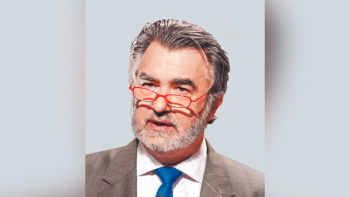
CCTs–Stakeholder Recommendations Emerge for Overcoming Resistance to Their Acceptance
Pressure grows for advances in drug development.
2022 is likely to see a lot more discussion in Europe of the hot-button issue of complex clinical trials as the pressure intensifies for greater effectiveness in drug development, with or without the continuing stimulus of the coronavirus pandemic. This
The exchanges during the workshop ventilated some of the open questions on specific challenges. The master protocol designs increasingly utilized for CCTs can contribute to de-risking and cost effectiveness, and an adaptive data-driven platform design is seen as offering greater agility, it was acknowledged. But outstanding questions related to whether they increase efficiency more in early, late or all phases of development, or how far the evidence they generate has influenced decision-making among sponsors or has informed key regulatory decisions. There are concerns relating to statistical methodology, and over international alignment on trial design across regulatory agencies or the speed of review by EU regulators. Among the recommendations formulated were the importance of early engagement with patients, regulators and HTA bodies in trial design challenges, and the need to develop efficient knowledge sharing platforms between key players to share the learnings and discuss how to advance the field.
Challenges identified in relation to trial conduct included data management issues, handling safety issues as they arise, and applying substantial modifications, such as adding or closing arms/comparisons, or adapting the control arm or the standard of care. In trial reporting, the main challenges identified were timing of the communications, and particularly the communication of arm-specific results in a way that does not compromise the confidentiality of overall results prior to their subsequent release.
Education and training received detailed attention, on the basis that as the complexity of trials increases, so the need for training is higher. Such useful material as exists tends to be limited to closed communities, and there is no clear agreement on whose responsibility it is to organize, update and share learning and training material across stakeholders–and still less on who should fund it.
Agencies participating in the workshop–they included Belgium, Germany, Italy, Norway, Sweden, the UK, and the European Medicines Agency and the FDA–indicated openness to discussion for new designs, including incorporation of historical data or real world evidence, but with the proviso that sources of data need to be assessed in view of the question at the center of the trial. Recommendations were that the approach should prioritize a clear formulation of the fundamental trial objective and end-points, then explore the available and relevant sources of data, and only then refine the global design and approach. A multistakeholder discussion is the appropriate forum for addressing these questions, it was suggested, with a precise explanation of why a CCT is being proposed, rather than a more traditional trial approach such as with randomized clinical trials.
But clinical and academic researchers are reported as becoming impatient–eager to explore new tools that can support their use of the rapidly growing understanding of disease and treatment, but frustrated with "the rigidity or hesitations that still condition some traditional regulatory attitudes towards novel trial approaches." Industry participants too argued that CCTs with reductions in sample size or timeline do not necessarily imply greater risk, and a lack of awareness and understanding, exacerbated by a lack of regulatory guidance, is a challenge.
Research ethics committees made clear the risks they see of being overwhelmed by additional–and more complex–demands on their largely voluntary membership, raising questions of resources and training, since they need to convey new knowledge to their members, and raise awareness. RECs stakeholders underlined that CCT protocols are complex and long, sometimes with references to documents that are not readily available, and the scrutiny must include protocol amendments, sample size, statistical analysis, trial design, the quality of investigators and facilities, insurance issues, and informed consent documents–which are also often long. In particular, RECs feel the need for expert input from statisticians, an asset not always easily available, particularly for smaller provincial ethics committees. Even where university RECs are familiar with the concept of CCT designs, it is often impossible to meet the tight timelines for assessment.
RECs would like their fees for reviewing CCTs to be revised, better taking into account the complexity of the initial clinical trial application or substantial amendment dossier, and hence the review workload. Overall, RECs feel they should be involved in the discussion of novel concepts at the earliest stage.
The same desire for early involvement is apparent in the report's coverage of views from health technology assessors, who are hesitant, even sceptical and mistrustful, over what they see as a focus on efficacy that omits due concern for the relative efficacy that it is their role to gauge. A prominent HTA representative stressed his view that most CCT definitions and discussions ignore the issue of relative effectiveness. Involvement from the HTA body perspective from an early stage in the use of CCTs is essential, was the message. Immediate further discussion was urged with all stakeholders, but principally and initially with EMA and regulators. "While HTA bodies need to evolve to handle changing realities in product development, there is disappointment about their exclusion from discussions of the newer methods emerging, which would have benefited from earlier HTA body input on the increased use of innovative approaches, making it possible to incorporate also their needs," says the report.
Newsletter
Stay current in clinical research with Applied Clinical Trials, providing expert insights, regulatory updates, and practical strategies for successful clinical trial design and execution.




